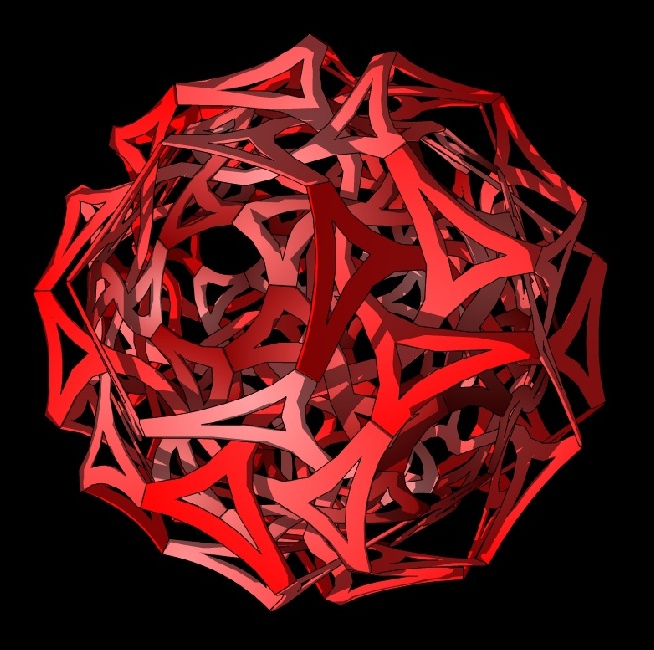

The colors will range from yellow at one end of the room, through continuously varying shades of orange, to red at the other end of the room. Each ball has a lighter structure and a darker structure intertwined.

Here are seven of the nine helium
balloons we set up in a test to determine the locations and heights of
the individual parts. (The other two are behind and above the
camera.) They make a dramatic flying motion across the
atrium. These are two-foot diameter balloons. The actual
components will be 40 to 48 inches in diameter of powder-coated
laser-cut aluminum, suspended by chains from the ceiling. Number
9, in red, will be over the catwalk at the far end of the image; number
1, in yellow, is behind the camera. From one end to the other, the
sculpture is about 115 feet long (35 meters).
There is an article with more information in the June 17, 2008 issue of Albion College News, available here.
Below are approximate sketches of the nine components. The final forms will be smoother, instead of polygonal, and proportioned slightly differently. And the rendered colors below are not very exact. The two types of components in each sphere are differentiated by a darker shade and a lighter shade. All the parts are planar and the joint angles between them are carried through unchanged in the nine balls. As the form morphs from yellow to red, the darker shade seems to move from outer to inner. But the darker parts are always slightly outer of the lighter ones when measured orthogonally to the center. The first form is an accessible anchor point for the evolution, because it can be seen as a dodecahedron (with circles for vertices) and an icosahedron (with stars for vertices). Note the gradual changes---the spreading of legs, tangling and untangling of arms, and the growing of holes---as the form evolves.

1.

2.

3.

4.

5.

6.

7.

8.

9.
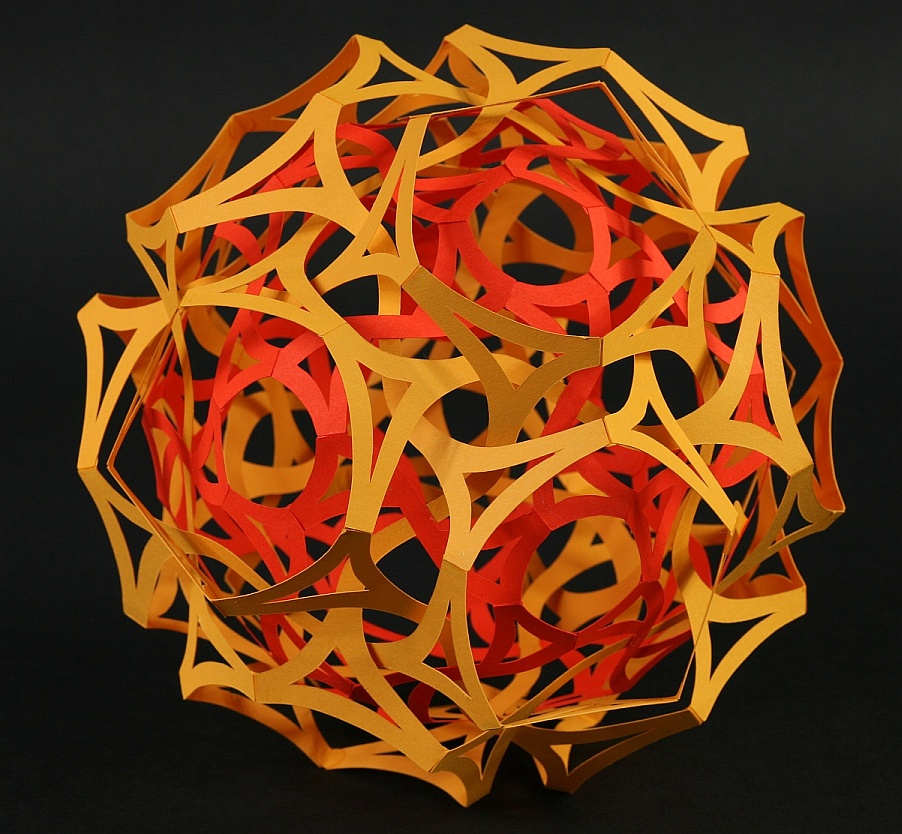
There is an article with more information in the June 17, 2008 issue of Albion College News, available here.
Below are approximate sketches of the nine components. The final forms will be smoother, instead of polygonal, and proportioned slightly differently. And the rendered colors below are not very exact. The two types of components in each sphere are differentiated by a darker shade and a lighter shade. All the parts are planar and the joint angles between them are carried through unchanged in the nine balls. As the form morphs from yellow to red, the darker shade seems to move from outer to inner. But the darker parts are always slightly outer of the lighter ones when measured orthogonally to the center. The first form is an accessible anchor point for the evolution, because it can be seen as a dodecahedron (with circles for vertices) and an icosahedron (with stars for vertices). Note the gradual changes---the spreading of legs, tangling and untangling of arms, and the growing of holes---as the form evolves.

1.

2.

3.

4.

5.

6.

7.

8.

9.
To help present the ideas to Albion
faculty and the laser-cutting fabricator, I made the above six-inch
paper model for form 9, which will actually be red, not yellow.
It was also useful for me in planning how
we will assemble the nine orbs. We plan to have a large sculpture barn
raising, perhaps spread over two days, where many people will
participate in the assembly. Each sculpture will have 90 flat
components and 120 small angled connectors. I am currently working out
zillions of small design details...

Here is the evolution of the nine fundamental shapes in glyph form.
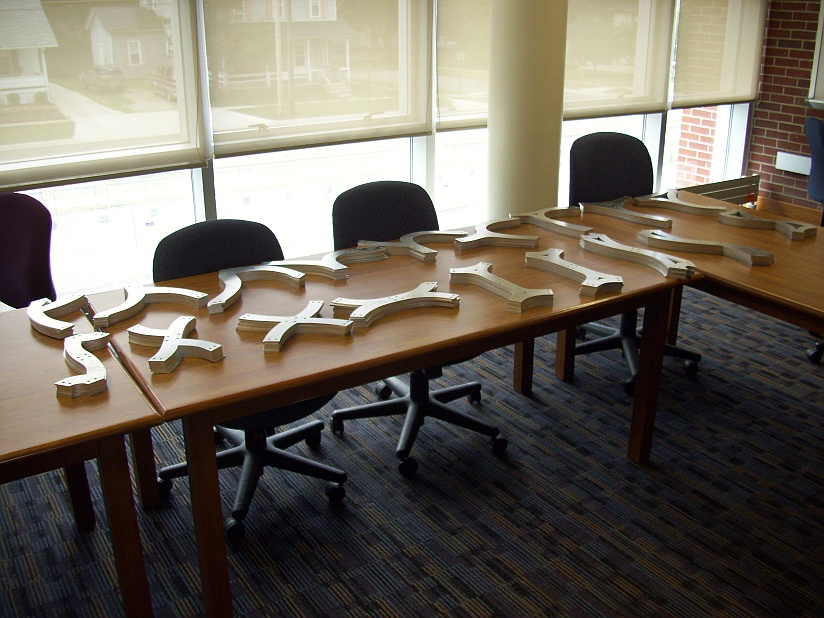
Here are the test parts---two shapes for each of the nine orbs.
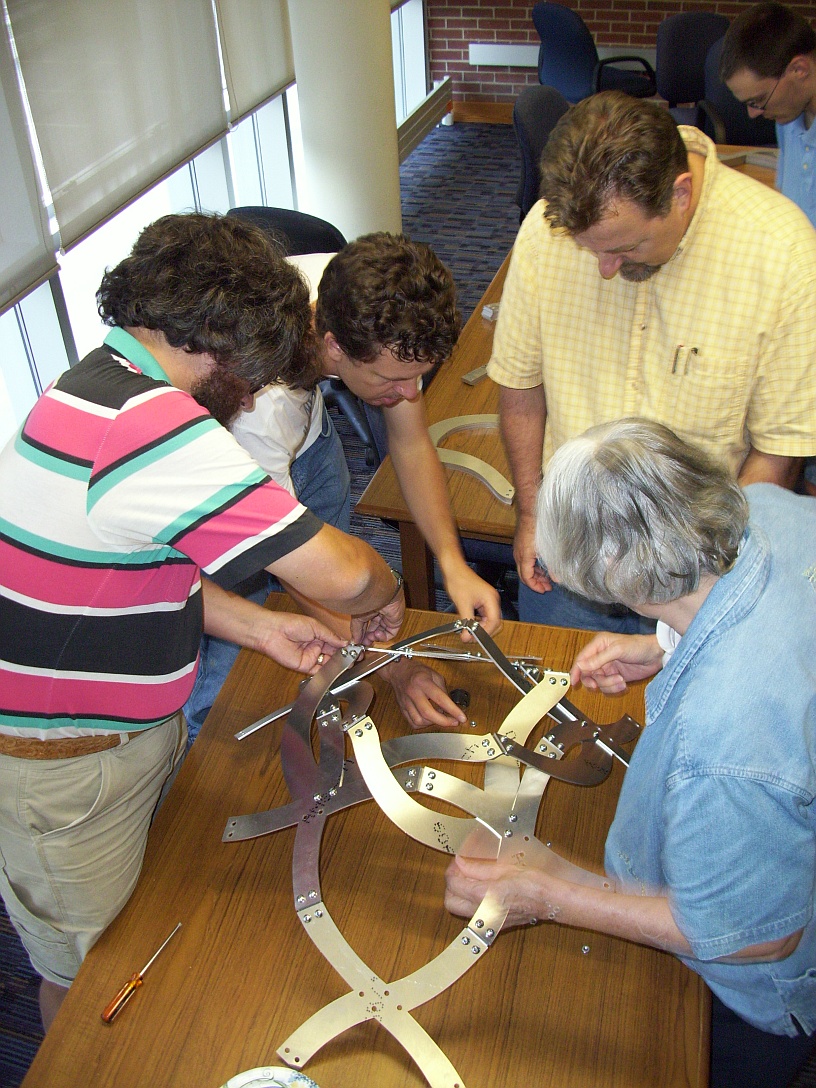
A small group of core faculty goes to work!
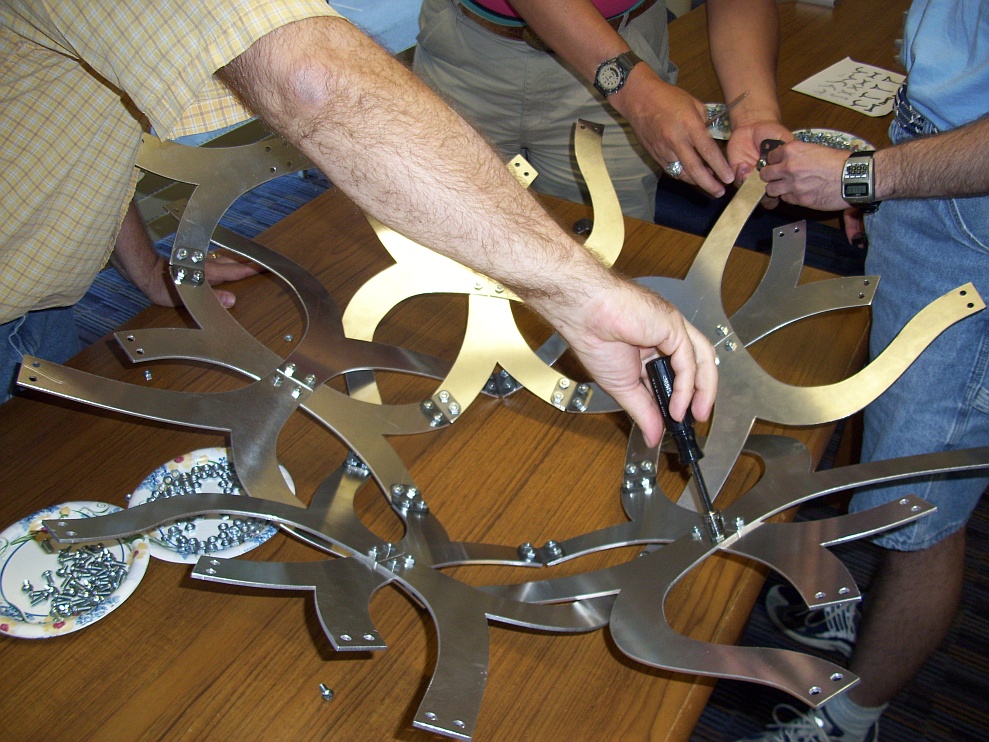
Everything fits beautifully.
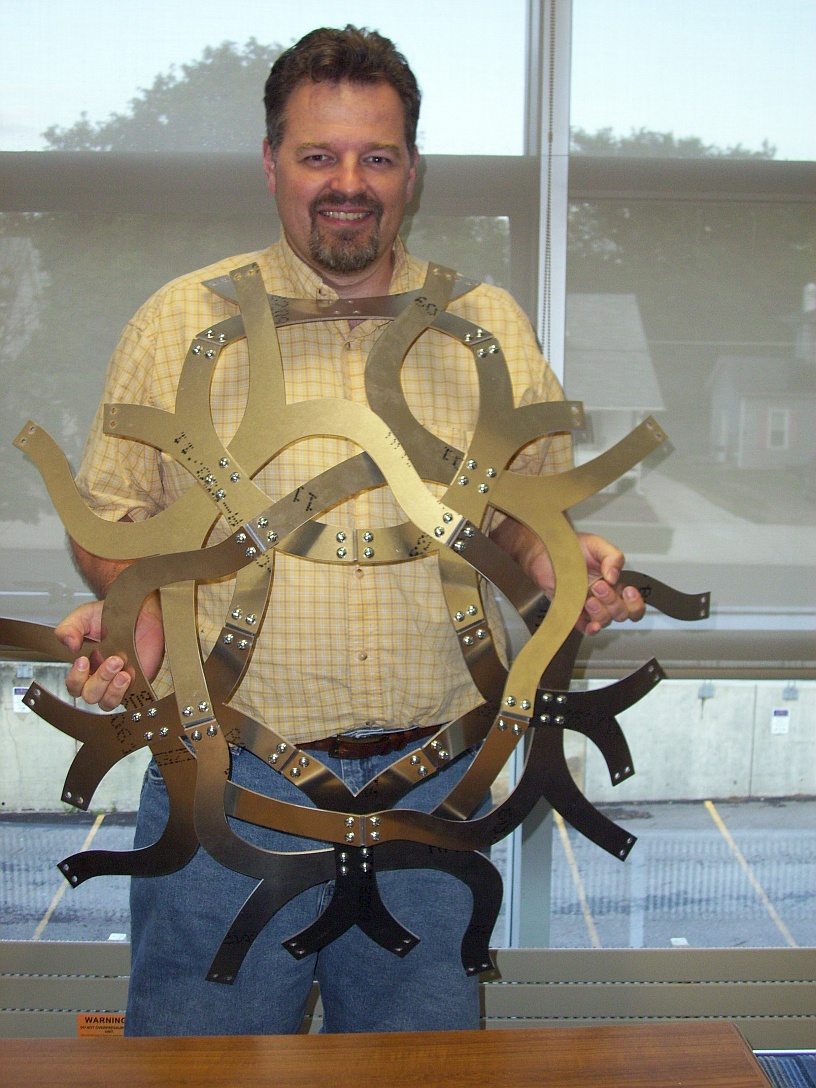
Here is Prof. David Reimann (chair of the CS&Math Dept.) modeling a test module.
I can't wait to get all the parts cut, coated, and assembled.
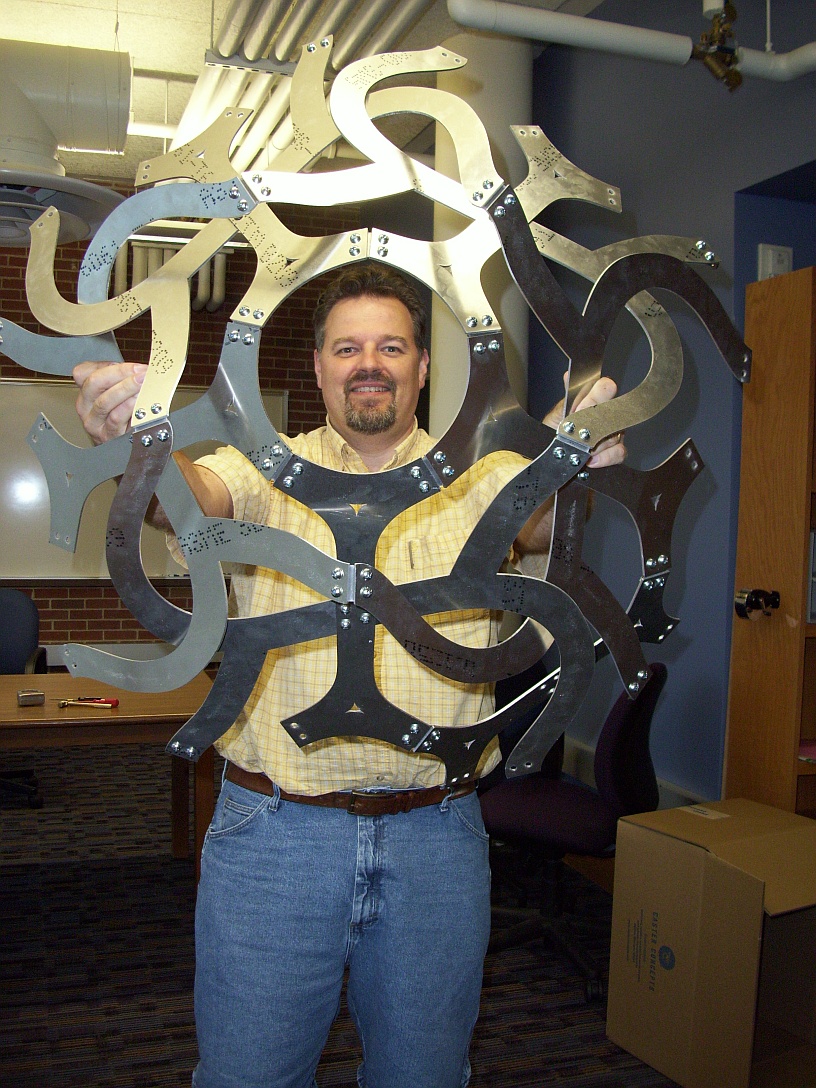
Even with just a few parts, the structures are pretty cool. They will look really intense after powder coating.
The sculpture barn raising is set for saturday, September 13.
Here are a campus announcement and a press notice in the Battle Creek Enquirer.
Here is a powerpoint presentation David Reimann prepared for advertising the event.

Here is the evolution of the nine fundamental shapes in glyph form.
In early August, the laser-cutter had
some test-parts ready, so I went back to Albion to check how they fit.

Here are the test parts---two shapes for each of the nine orbs.

A small group of core faculty goes to work!

Everything fits beautifully.

Here is Prof. David Reimann (chair of the CS&Math Dept.) modeling a test module.
I can't wait to get all the parts cut, coated, and assembled.

Even with just a few parts, the structures are pretty cool. They will look really intense after powder coating.
The sculpture barn raising is set for saturday, September 13.
Here are a campus announcement and a press notice in the Battle Creek Enquirer.
Here is a powerpoint presentation David Reimann prepared for advertising the event.
Addendum: